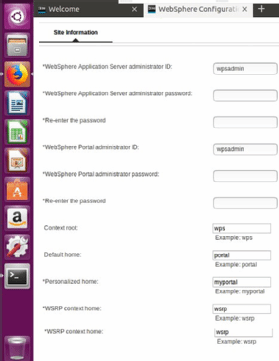
animind - Fotolia
Get these benefits when you simplify a WebSphere Portal URL
If your Portal URL displays the tired /wps/portal preamble in the browser's location bar, it's time to perform Portal URL simplification and change it.
As you surf the internet, it's not uncommon to stumble across the public site of a respected international company that still employs the tired, old WebSphere Portal URL format of /wps/portal after the domain name.
While this may have been a requirement in the past, it is no longer necessary. WebSphere Portal now provides a built-in configuration wizard that enables administrators to simplify a WebSphere Portal URL and strip out the unseemly /wps/portal context root.
If your organization uses WebSphere Portal and you still haven't simplified your URL, here are five reasons why you should:
1. Improves search engine optimization
Search engines will look at the first 50 characters of your URL for keywords that might match a given query. If your URL is polluted with nonoptimized text strings, such as /wps/portal, you surrender valuable real estate that could otherwise be used to attract users to your website.
2. Leads to better bookmarking and sharing
Simplified WebSphere Portal URLs not only rid themselves of the /wps/portal context root, but they state information that would make the URL especially long and get stripped away. This simplification makes it easier to type URLs by hand and to bookmark pages. It also helps when a link is shared via social media channels, which typically limit a URL's length.
3. Eliminates a convoluted and disliked structure
The WebSphere Portal URL has always looked ugly, with its context root and a multitude of undecipherable query parameter strings appended. Two common complaints are that the WebSphere Portal URL looks unwieldly and that it reflects poorly on an organization. Portal URL simplification can easily solve these problems.

4. Future-proofs your implementation and avoids lock-in
If all of your users bookmarked /wps/portal or the entirety of your internal links hinge on the predefined portal context root, you'll face some difficulty when you decide to migrate away from WebSphere Portal to Liferay or WordPress. If you simplify your URL, you future-proof your application; at the very least, you avoid potential long-term lock-in concerns.
5. Hides the portal implementation
People don't need to know that you use WebSphere Portal. From a security standpoint, the fewer people who know about your back-end implementation, the better. But it's not just about security. Business users and stakeholders often incorrectly make assumptions about a portal server's capabilities.
Furthermore, when developers get locked into a portal mindset, they can often fall into a heavy server-side mentality rather than a more client-side approach with frameworks such as React, Ember or AngularJS used in the portal. When you hide the fact that WebSphere Portal is being used under the covers, you might open minds about what's possible with the implementation of a portal-based content management or application delivery system, as many people underestimate the capabilities of portal technology.









